Ceramic baths: varieties and tips for choosing
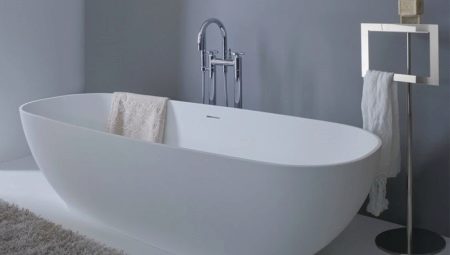
The plumbing market offers a huge selection of bathtubs. Products are represented by fonts of various shapes, colors and textures. The choice of materials is also rich. Baths can be made of cast iron, steel, acrylic, glass and other raw materials. Ceramics is a separate item on this list. Consider the features, advantages, disadvantages and subtleties of choosing ceramic products.
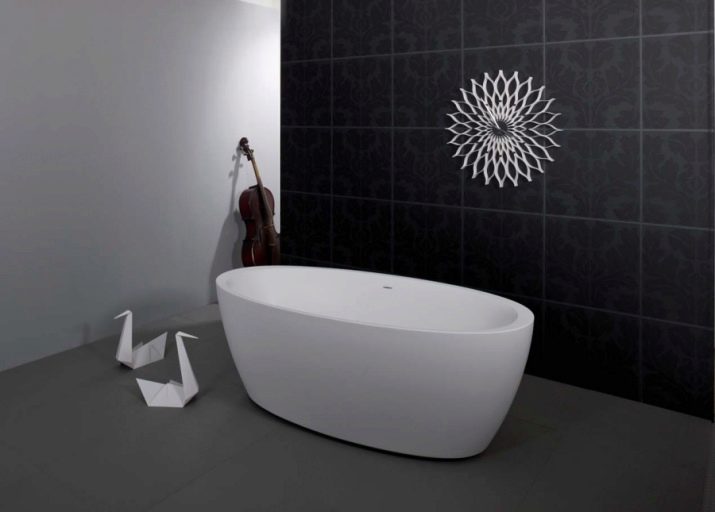
Subtleties of production
Depending on the manufacturing technology, there are 2 types of ceramic baths: sintered and earthenware... In the production of the first, the base is made - a metal bowl. It can have a variety of capacities and shapes. A clay mass is applied to the resulting frame and fired at high temperatures (900-1000 degrees). The “hardened” product is enamelled, dried and sold.
The second production method is the most time consuming and costly. Traditional earthenware baths are made from a polymer composition. It includes marble chips and a polyester resin binder.
The use of this substance provides the finished product with a glossy shine, strength and resistance to mechanical abrasion.
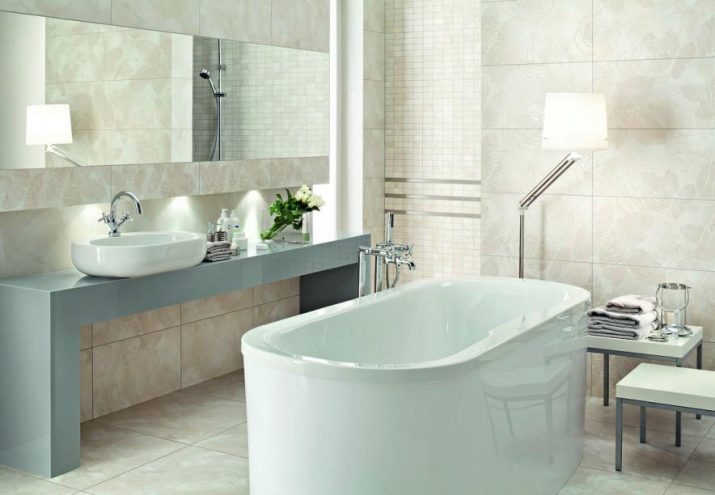
Advantages and disadvantages
The ceramic bath has a number of undeniable advantages. The main advantages of such products:
- aesthetics - bathtubs look elegant and impressive; they can become the main highlight of any interior;
- wide choose - there are products on sale for every taste, they differ in size, color and design;
- excellent heat preservation;
- resistance to mechanical damage (the surface is not scratched, traces of scuffs do not appear on it, even with intensive use);
- non-susceptibility to corrosion;
- environmental Safety.
Over time, yellowness will not appear on ceramics. Such a bath will be easy to clean.
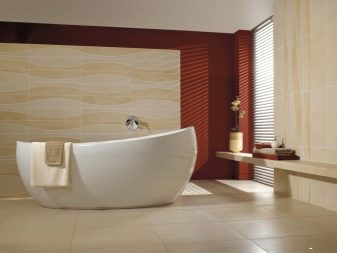
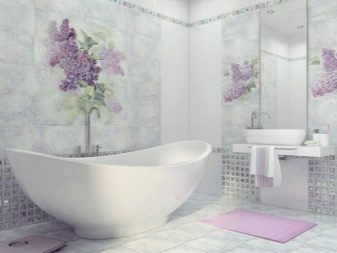
However, this sanitary ware also has certain disadvantages. The main disadvantage is the high cost, which is why not every consumer will be able to buy a ceramic hot tub.... The disadvantages also include fragility - if a heavy object falls on the product, the ceramics may break off. In this case, it cannot be restored. Ceramic baths are pretty heavy, because of which difficulties may arise during their installation.
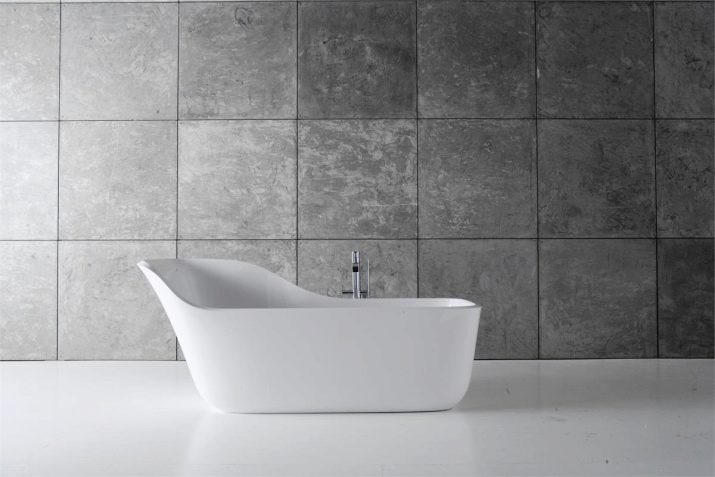
Models
Manufacturers produce ceramic bathtubs for every taste and consumer's request. On sale there is both large and miniature models... Compact solutions are intended for installation in a small-sized room (most often they are purchased by the owners of apartments with a combined bathroom), where every centimeter is important. There are models for accommodating two people - in such fonts it is convenient to sit opposite each other. In addition, manufacturers offer shortened fonts and seating options equipped with a door and seat.
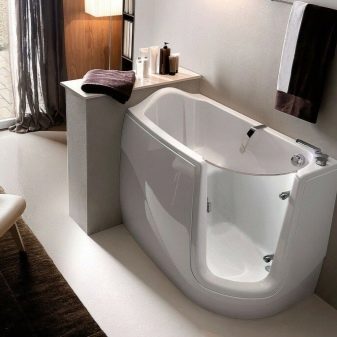
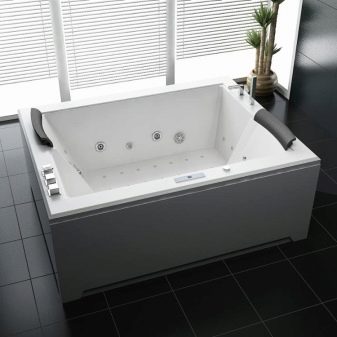
Ceramic baths can be:
- rectangular;

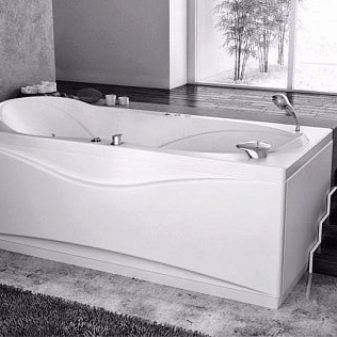
- square;
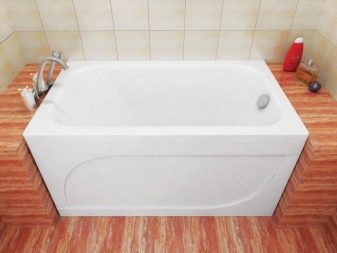
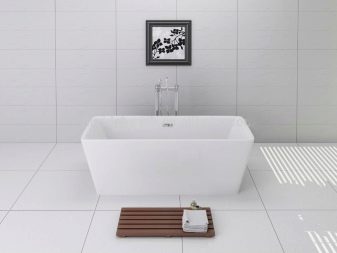
- round;
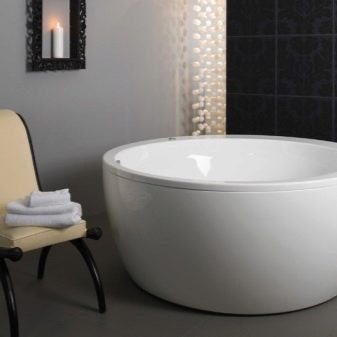
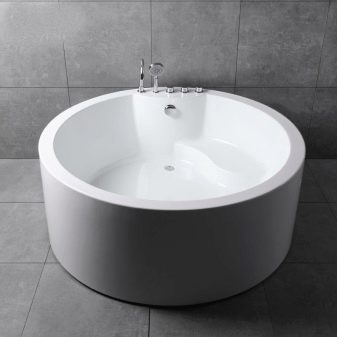
- oval;
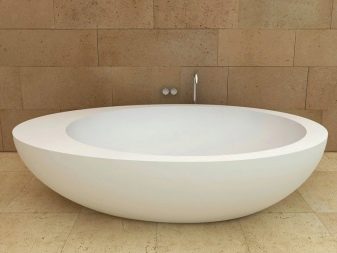
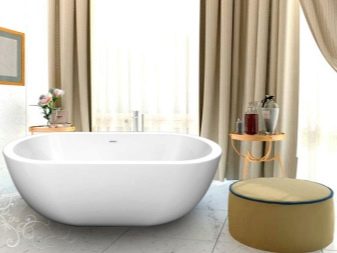
- triangular;

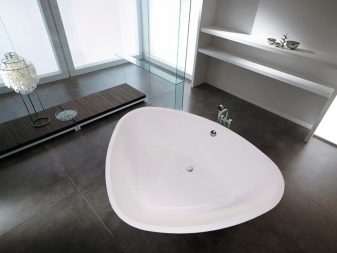
- asymmetrical.
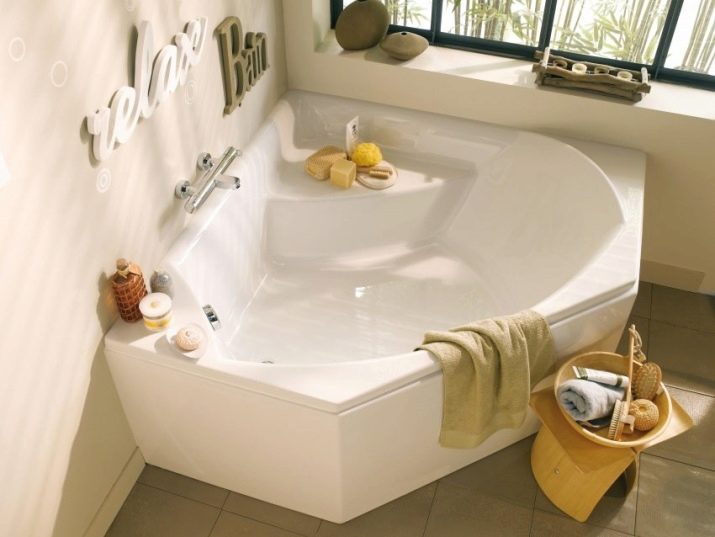
Most corner models are represented by bowls that visually resemble a quarter circle. Manufacturers also produce versions with a sloped bottom, no legs, or with legs.
The foot bath is equipped with various supports - these can be traditional legs or columns. Exclusive models are decorated with stucco, various semi-precious stones or minerals.


For more convenient operation, manufacturers produce models with handles, backlighting, and various holders. There are solutions for sale with hydro and air massage. It is worth considering that the more functions are provided, the higher the cost will have to be paid for a particular model.

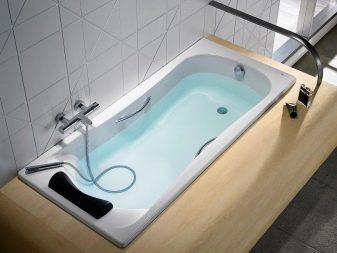
How to choose?
Bath - compulsory sanitary ware in any bathroom. It is necessary to maintain a person's hygiene and to relax him. When choosing a ceramic bathtub, it is important to pay attention to several nuances. These primarily include the appearance. The product must fit into the interior of the room and be in harmony with furnishings or plumbing elements.
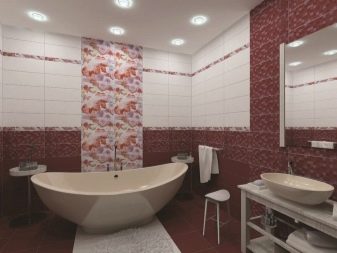
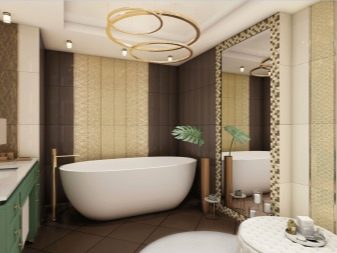
In addition, you need to take into account the style in which the room is decorated:
- for classics an excellent solution would be white or beige free-standing models (it is best to place them in the center);
- for ethnic styles it is advisable to take a closer look at the built-in fonts of a round or oval shape;
- rectangular bowls are ideal for baroque or modern;
- for rooms decorated in modern styles, designers are advised to take a closer look at bathtubs designed to be placed on the podium, or to give preference to built-in models.
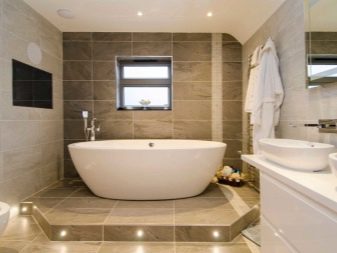
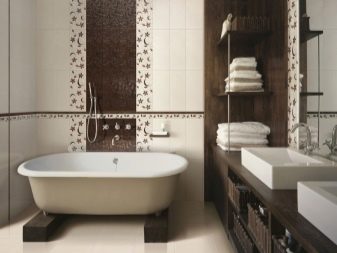
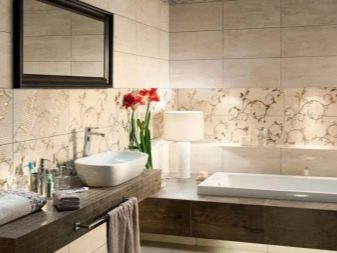
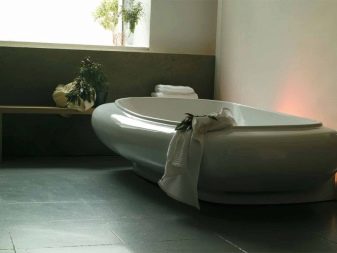
To make the bath comfortable to use, it is necessary to determine the size in advance. The height of the product is selected taking into account the growth of the household. The optimal height for an adult ranges from 65 to 70 cm.If there are small children in the family, it is advisable to look at lower solutions. The optimal bath depth is 50-60 cm, the length is 160-180 cm, and the width indicators are 70-80 cm.
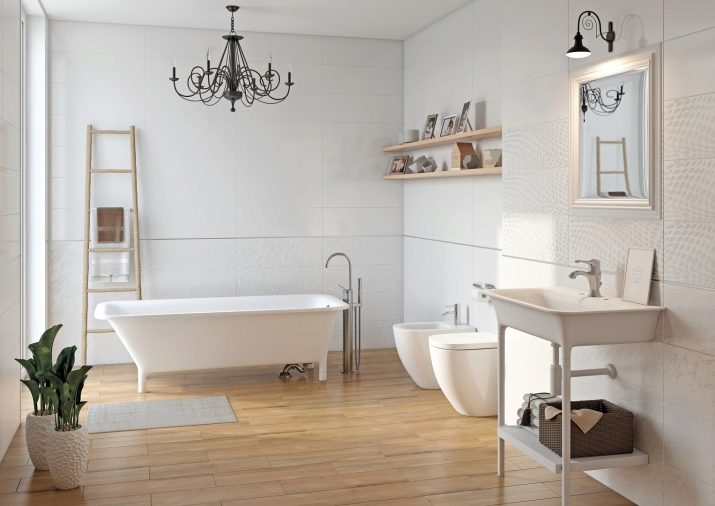
When choosing the dimensions of the product, the size of the room should also be taken into account. You need to take into account the area of the bathroom, a set of furniture, household appliances (for example, a washing machine). When carrying out calculations, it will be clear how much space will be left for installing the font.
When choosing a bath, it is worth considering the reputation of the manufacturer. It is not recommended to purchase a sanitary ware of dubious production at a low price - such a product may be of poor quality.
Among the manufacturers of ceramic bathtubs, the Italian brands Flaminia and Globo were able to establish themselves.
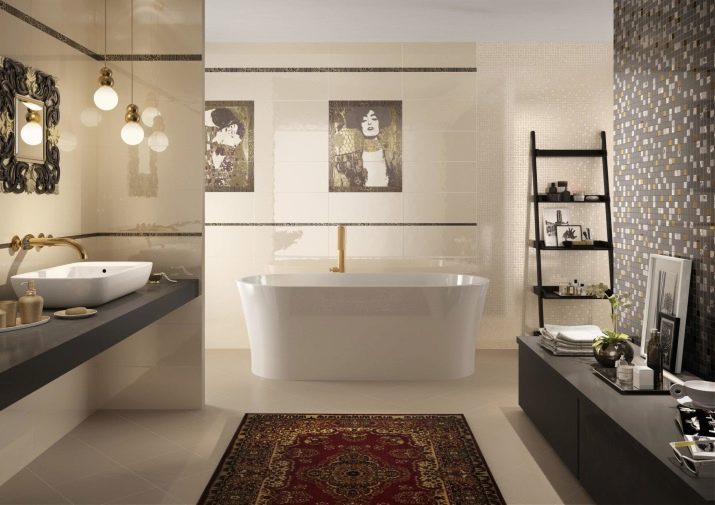
How to choose a bath, see below.








